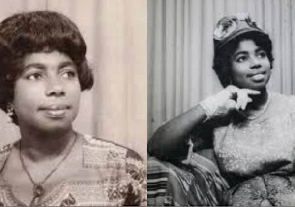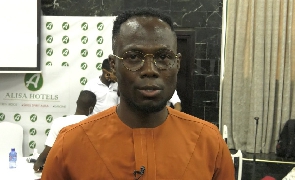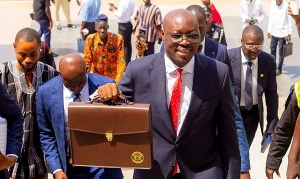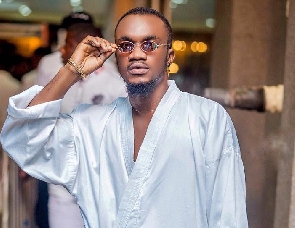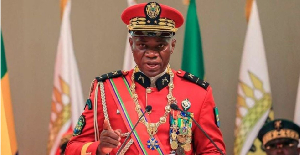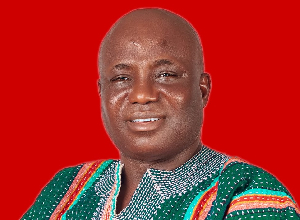Felicia Ansah Abban‘s journey to becoming Ghana’s first female photographer began in Sekondi-Takoradi in Western Ghana.
Born in 1935, Abban who started experimenting with the camera at the age of 14 left her hometown at the age of 18 to Ghana’s capital, Accra.
A newly married bride, she and her husband Robert Abban, the man who designed the fabric which had Kwame Nkrumah’s portrait on flowers with Ghana map for Ghana’s independence celebrations in 1957 settled in Accra’s coastal town of Jamestown.
Abban, who learned the art of photography in her father’s studios at the tender of 14, would establish her studio— ‘Mrs. Felicia Abban’s Day and Night Quality Art Studio’ in her new settlement of Jamestown in 1955.
Jamestown was then the center of town. Abban’s studio was said to be situated close to other studios, J.K. Bruce Vanderpuije’s “Deo Gratias” and James Barnor’s “Ever Young Studio”.
According to Contemporary, Abban in her early career days also worked as a stringer for the Guinea Press Limited – the publishing house of President Kwame Nkrumah’s Conventions People’s Party – but kept her studio practice close to her heart.
In her 60-year career, Abban worked as a photographer for Ghana’s first president, Kwame Nkrumah, for many years during the 1960s.

Felicia Abban studio
Laurian R. Bowles, the author of Dress Politics and Framing Self in Ghana; The Studio Photographs of Felicia Abban described her June 2014 meeting with Abban as part of a project on West African wax-print.
“The initial subject of conversation was Robert Abban, Felicia’s deceased husband who designed the commemorative cloth that featured Dr. Kwame Nkrumah’s portrait for the independence celebrations in 1957, but the conversation quickly turned to the framed portraits and news features on the family room walls of Abban’s Accra home.
“Dated from the late 1950s onward, news clippings tout Felicia Abban as Ghana’s “first female professional photographer” and several photographers cite Felicia Abban as the first Ghanaian woman photographer and owner of an Accra studio. Abban was the first president’s private photographer for several years during the 1960s and Nkrumah was “one of the many high-profile clients” she photographed during the early days of independence,” Bowles wrote.

Felicia Abban self-portrait
Bowles continued that Abban’s private collection consists mostly of studio photographs from the 1950s to 1970s when she regularly produced self-portraits before she attended dinner parties and political events.
“Answering why she went out of her way to make self-portraits before going to town, Abban held out a photograph where she is dressed in a luxurious wax-print with golden thread and exclaimed, ‘Because I looked good and it was good for business!’
“Abban went on to describe the collection of self-portraits as “calling cards” crafted around her own musings about the early independence period, with clothing as the central expression of her identity.
“Akin to a gallery of selfies stored in a cellphone, the photographs freeze the ebullient idealism of independence through the eyes of the woman photographer. In many of the photographs, Abban’s attire typifies the stylistic touchstones of the ‘60s, with perfectly coiffed wigs and dresses with billowed sleeves. Other photographs harken to a 1950s debutante iconography, replete with pearl necklaces, floral hat, and lace gloves, while she leans her right arm over an elegant piece of classic Ghanaian kente cloth,” Bowles wrote.
Consistent throughout the diverse photographs was the way in which Abban uses clothing to visibly articulate a feminine identity that plays with the traditional and contemporary in artful hybridity that is urbane and trans-Atlantic.

Abban’s works would finally get acknowledged in the international art world in 2017.
Nana Ofosuaa Oforiatta Ayim, the curator of Ghana Freedom, the exhibition in the country’s first pavilion at the Venice Biennale, selected Abban’s work to be part of the pioneering show.
Abban was among the six artists from Ghana who were selected because their work represents three generations of Ghanaian art.
They were; El Anatsui, Ibrahim Maham, Abban, Lynette Yiadom-Boakye, John Akomfrah, and Selasi Awusi Sosu. Abban’s portraits and self-portraits depict a moment in Ghanaian history through her own female gaze, capturing their style and attitude.
The organization is also helping to honor Abban’s legacy by turning her studio into a museum that will not only preserve her work but also offer workshops and space that will nurture the country’s next generation of artists.
Abban retired from photography as a result of a worsening arthritis condition.
General News of Thursday, 19 December 2019
Source: face2faceafrica.com

